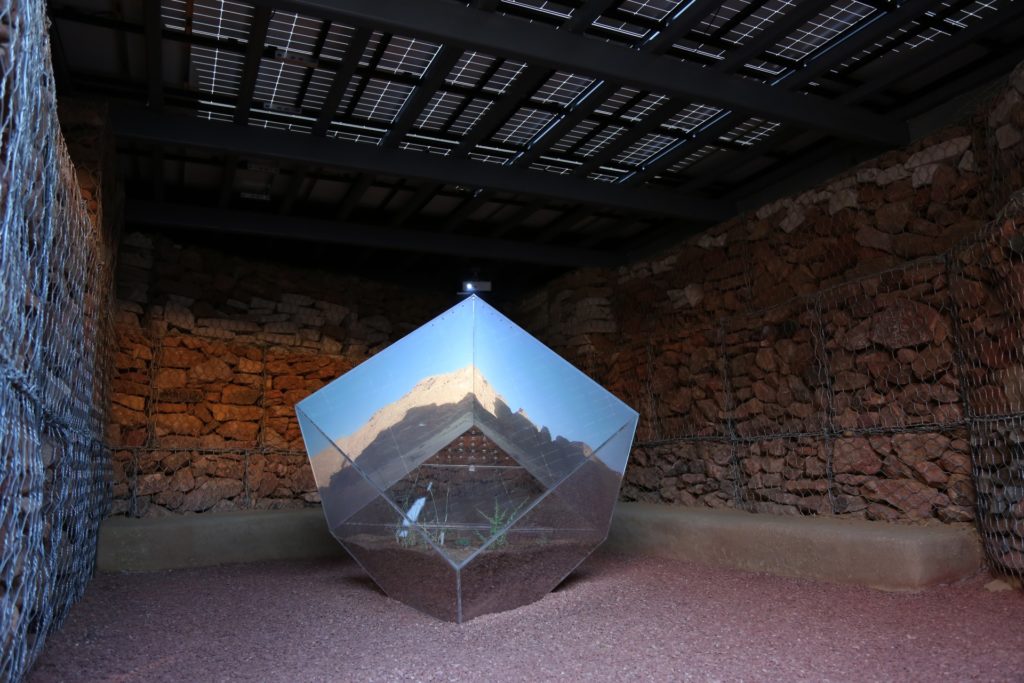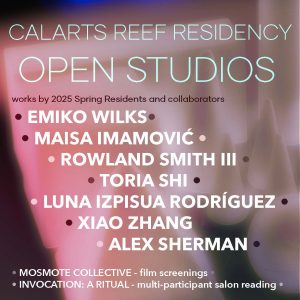Stephanie Deumer (Art MFA 15) casts her art as a “slow, digestive process”—steeped in research, nurtured with deep thought, often taking shape through video and light-based media.
She’s also big into plant life, especially artificial plant growth.
In the Saudi Arabian desert this year, Deumer has melded those passions in a subterranean installation at the latest Desert X AIUla exhibition—an international show heralded as “magnificent” in Forbes.
Deumer’s work there, Under the Same Sun, features a greenhouse of native plants in a roughly room-sized underground space. Bathed in a video livestream from the surface, the plants have light to grow, thanks to a nearby installation of off-the-grid solar panels.
“I was really fascinated by making this self-sustaining system in a way that uses media,” says Deumer, who is among 15 artists invited to exhibit at Desert X AIUla’s second edition. “It uses media in a way that’s almost utilitarian—in a sense—as well as being an installation.”
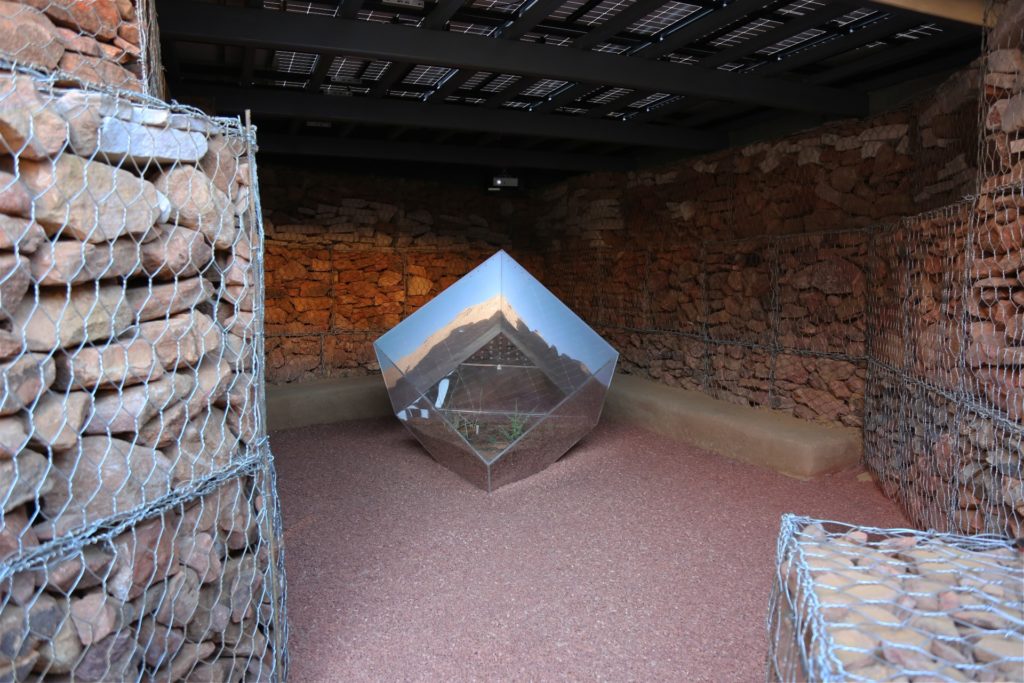
Stephanie Deumer, Under the Same Sun, installation view, Desert X AlUla 2022, build: UAP, Constantine KSA, Silicon Solar, and FVR Innovation Hub, courtesy the artist and Desert X AlUla. © Stephanie Deumer 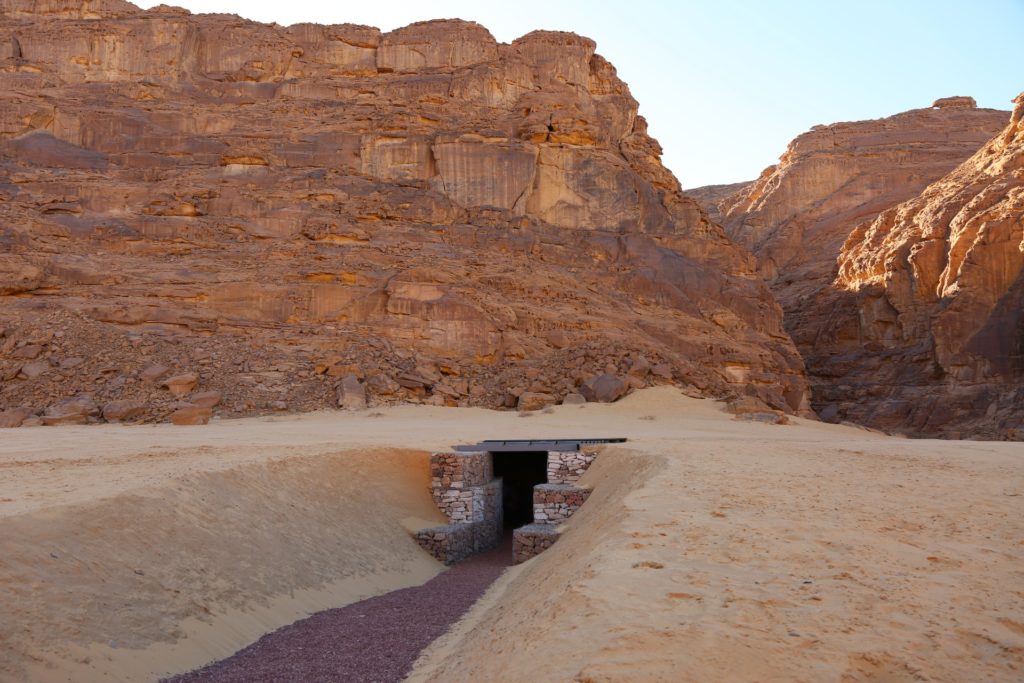
Stephanie Deumer, Under the Same Sun, installation view, Desert X AlUla 2022, build: UAP, Constantine KSA, Silicon Solar, and FVR Innovation Hub, courtesy the artist and Desert X AlUla. © Stephanie Deumer 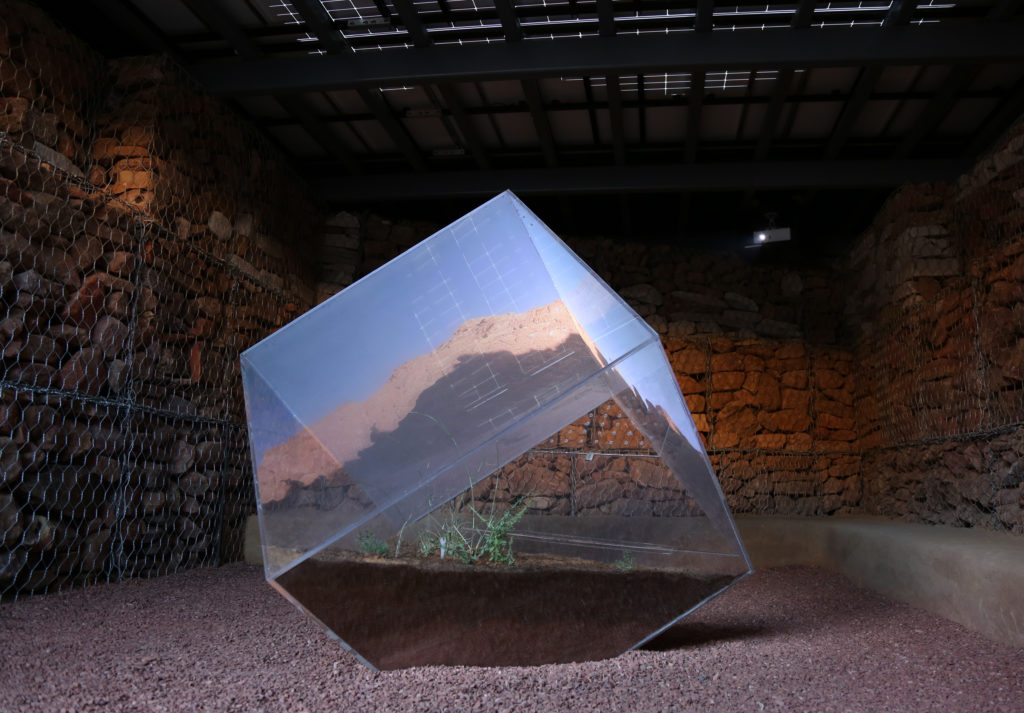
Stephanie Deumer, Under the Same Sun, installation view, Desert X AlUla 2022, build: UAP, Constantine KSA, Silicon Solar, and FVR Innovation Hub, courtesy the artist and Desert X AlUla. © Stephanie Deumer 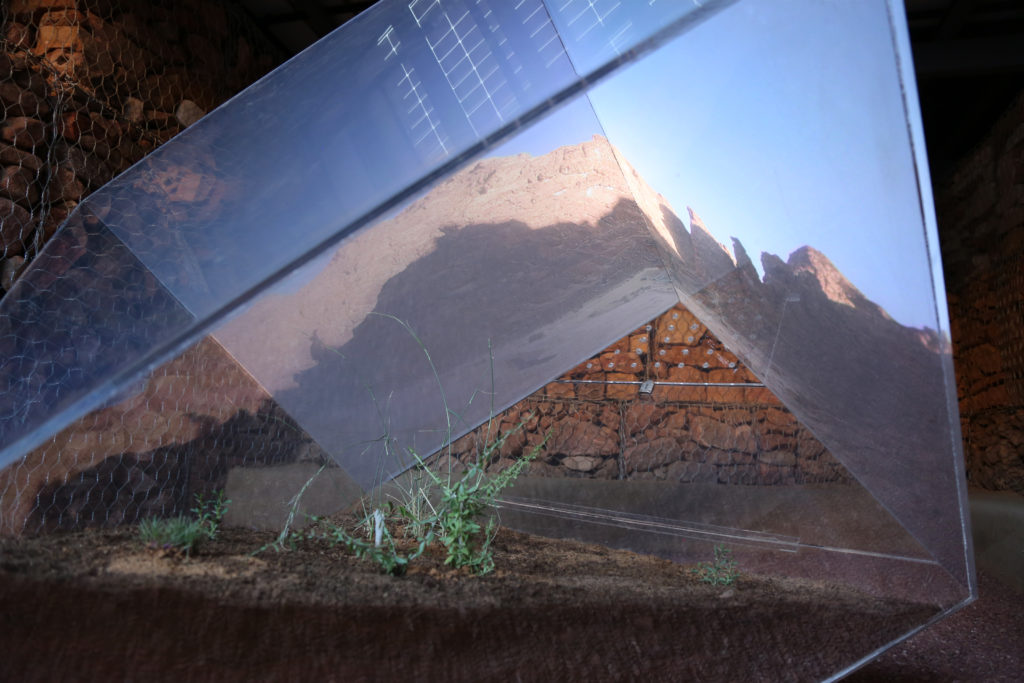
Stephanie Deumer, Under the Same Sun, installation view, Desert X AlUla 2022, build: UAP, Constantine KSA, Silicon Solar, and FVR Innovation Hub, courtesy the artist and Desert X AlUla. © Stephanie Deumer
A public, recurring event, Desert X first appeared in Saudi Arabia in 2020. Curated by Reem Fadda, Raneem Farsi, and Neville Wakefield, this year’s program brings together voices from across the world under the theme “Sarab.” It “explores ideas of mirage and oasis, both intrinsic to desert history and culture, that have taken complex worldwide significance over time,” according to Desert X’s official website.
The event takes cues from earlier iterations of Desert X in California, the host organization notes.
The Art Newspaper profiled Deumer’s piece, which opened Feb. 11 with the rest of the latest show. The 2022 exhibition continues through March 30 in AIUla, a historic city in the Medina Region. The area of northwestern Saudi Arabia is home to a World Heritage site designated by the United Nations Educational, Scientific and Cultural Organization.
In a canyon rife with petroglyphs, Deumer oversaw the installation of her project this winter. “It feels like you’re walking in history,” she says, “which made it difficult to put new work there. That’s why I ended up digging into the ground—I didn’t want to put something adjacent to the surroundings.”
During excavation, the installation crew didn’t strike any rocks, just more and more sand, Deumer says. Sand confronted them again in mid-day sandstorms.
“I think I still have sand in my hair—I don’t know if it’ll ever come out,” she says. “You just become part of the sand, I think, by the end of it. It was like nothing I ever experienced before.”
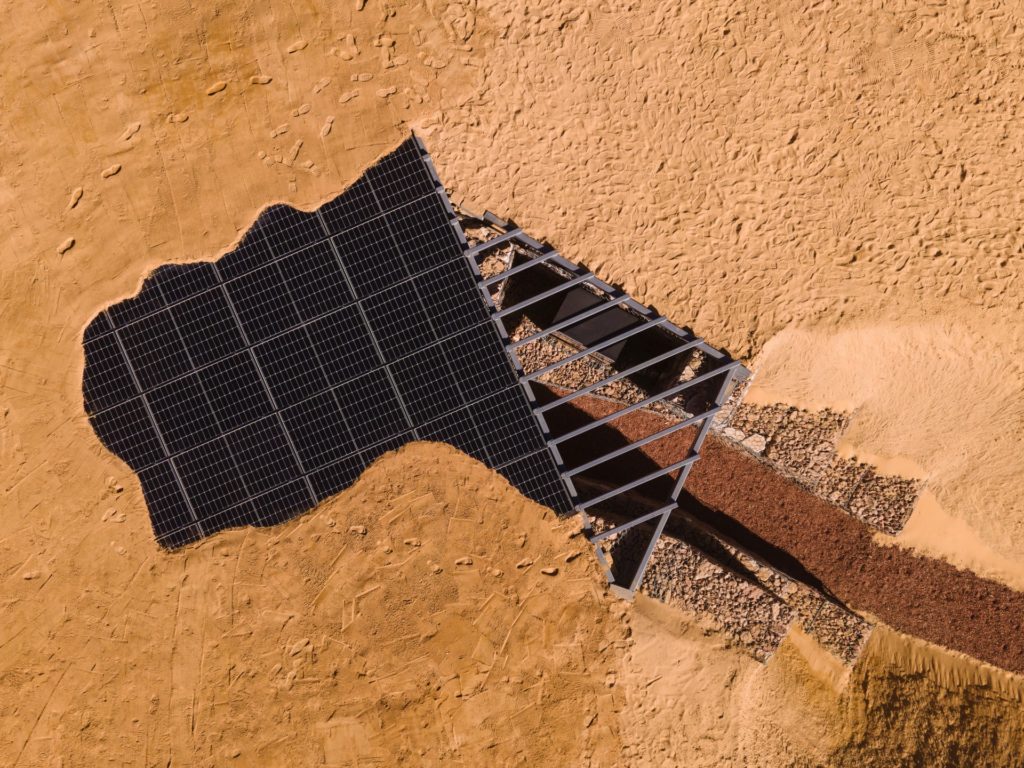
Stephanie Deumer, Under the Same Sun, installation view, Desert X AlUla 2022, build: UAP, Constantine KSA, Silicon Solar, and FVR Innovation Hub, courtesy the artist and Desert X AlUla, photo by Lance Gerber. © Stephanie Deumer 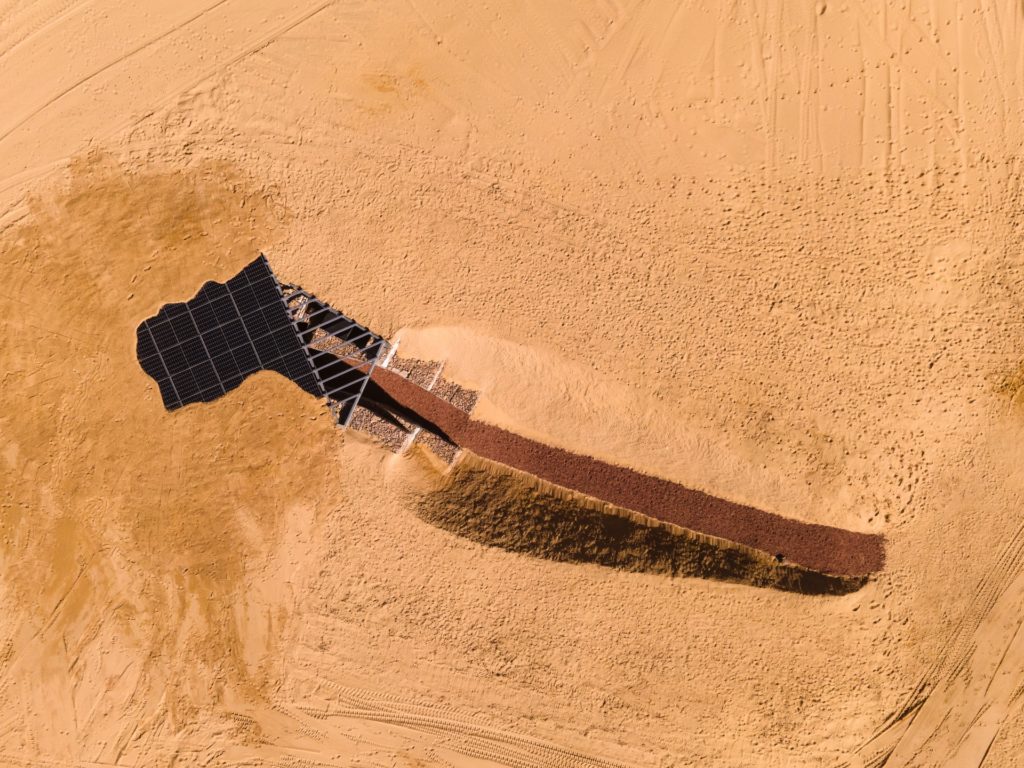
Stephanie Deumer, Under the Same Sun, installation view, Desert X AlUla 2022, build: UAP, Constantine KSA, Silicon Solar, and FVR Innovation Hub, courtesy the artist and Desert X AlUla, photo by Lance Gerber. © Stephanie Deumer 
Stephanie Deumer, Under the Same Sun, installation view, Desert X AlUla 2022, build: UAP, Constantine KSA, Silicon Solar, and FVR Innovation Hub, courtesy the artist and Desert X AlUla. © Stephanie Deumer 
Stephanie Deumer, Under the Same Sun, installation view, Desert X AlUla 2022, build: UAP, Constantine KSA, Silicon Solar, and FVR Innovation Hub, courtesy the artist and Desert X AlUla. © Stephanie Deumer
Born in Ontario, Deumer remains an Angeleno since graduating from CalArts. A recipient of the 2019 Research and Creation Grant from the Canada Arts Council, the visual artist has had residencies at the Banff Centre for Arts and Creativity, Cerritos College, and The REEF in Los Angeles. Her REEF residency was part of a joint program with CalArts that continues to support students in the School of Critical Studies and in the School of Art.
Following the Desert X engagement, Deumer says she’s heading back into the studio and “starting from scratch” on new work. Also on the horizon: TRUCK Contemporary Art, a nonprofit center in Calgary, Alberta, will present her 2019 digital film “Spooky Action at a Distance” from May 27 through July 2, she says.
Deumer made the film as part of her participation in the Whitney Museum’s Independent Study Program in New York. The piece digs into women’s objectification through their disembodiment in technology—in particular digital assistants like Apple’s Siri and Amazon’s Alexa.
These assistants often carry a feminized identity as a default, Deumer notes. That’s long bothered her.
“Why is this a female entity? Why is it perpetuating the same sort of social structures?” Deumer says. The pattern “drives past norms of women’s roles in society as an assistant or household or domestic worker.”
Her interests in technology and in reproduction and replication—both in society and in biology—tend to converge in her art, she adds. Her deliberate, time-intensive creative process can take years, “and I’m very thankful for that.”
“I think CalArts solidified for me my working process,” Deumer says. “The program really encouraged a deep dive into things, a lot of research, a lot of thought. For me, it creates a very slow process but a very rewarding process.”
